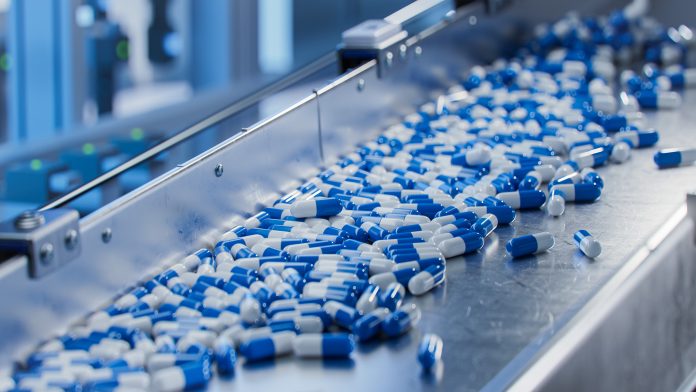Poor adherence to drug therapies can lead to medication waste and poor patient outcomes. Tim Wooller shares some of the reasons behind poor adherence to medication and how connected drug delivery devices can help
Drug therapies are only effective if people take them as intended. The WHO published a report back in 2003 stating rates of adherence in developed countries averaged only about 50%, with adherence for some drug therapies being significantly lower. Poor adherence leads to poor patient outcomes, straining healthcare systems and impacting pharmaceutical company profits and further investment in drug R&D.
In the 20 years since the WHO report, medical technology has moved significantly, especially around smart devices and connectivity. Embedded electronics and wireless technologies have found their way into many drug delivery devices which patients use at home, such as injectors, inhalers, patch pumps, and nebulisers. These technologies help automate processes, capture data, and communicate that data to the patient or doctor directly or via companion devices such as smartphones or tablets.
Yet, while there has been a rush to implement connectivity in these devices, technology alone does not result in better patient outcomes. To have a positive impact, designers and healthcare companies must find better ways to engage patients and help them adhere to their therapies. But how?
Understanding why your users do not adhere to their therapies
As a starting point, it is important to understand why patients do not adhere in the first place. Many academics have published theories on medication adherence, concluding that the issue is complex and driven by a range of factors, including:
- How the patient’s condition affects their ability to adhere to their therapy;
- The drug and its actual or perceived side effects on the patient;
- Whether the healthcare system and quality of care the patient receives are adequate;
- Other patient-related, demographic and behavioural factors such as social life and general attitude to health.
To discern the barriers at play and design more compelling and engaging experiences to help people adhere, healthcare companies must gain understanding and empathy for patients. This can be achieved through a range of Human-Centred Design (HCD) methods which help map the context of use: How do patients, their therapies, and their environments differ? What tasks do patients perform to administer the therapy? How do they feel when they perform these tasks, and where are they struggling? From this output, a better picture can be formed to understand where the opportunities lie for improvement.
Simplify the process of taking drug therapies
One such opportunity to improve connected drug delivery devices is to simplify the process of taking a therapy. Patients lead busy lives, so if steps in the process can be automated, such as requesting refills or repeat prescriptions when supplies are running low or reminding patients when medications need taking, it reduces the burden on patients to remember, especially if they suffer cognitive impairments due to their condition.
Connected drug delivery devices also collect a lot of data in real time, and one of the most meaningful uses of this data is to monitor patients remotely and to track trends over time. Rather than relying on infrequent doctor’s appointments to identify issues with the patient’s medication or adherence, the device and service can monitor the patient’s progress and flag issues as they occur, feeding the information back to the doctor to make more informed choices about corrective actions. Remote patient monitoring has become an effective way of improving patient care in recent years, with Deloitte finding that it is especially effective in allowing people with COPD to control their condition themselves from home, increasing the likelihood of adherence.
Gamification can improve patient self-management
An engaged patient is more likely to persevere with their therapy, and there are many behavioural strategies which can help influence this. Gamification, used successfully in consumer fitness and learning apps, employs features such as points, rewards and goals, usually broken down into achievable chunks, to help keep attention sharp and encourage progression. A study by Health Informatics Journal corroborates this, finding that gamification has the potential to improve patient self-management for chronic diseases. Critically, gamification is an important way to engage children, especially those with notoriously hard-to-manage conditions like type 1 diabetes.
Personalise and standardise the user experience of medical devices
The more relevant the device user experience is to an individual, the better. A personalised medical device and app ecosystem can provide a better way for patients to manage their condition by working around their lifestyle rather than against it, capturing their medication history, and cataloguing any side effects that can be fed back to their doctor.
At the wider end of the spectrum, connected drug delivery devices can also help even out the quality of healthcare patients receive. Big data can capture key learnings and aggregate them across large patient populations, enabling a degree of standardisation to their care.
The future of connected drug delivery devices
Connectivity has come so far, with the promise of going a lot further. In future, we expect to see more pervasive patient monitoring and deeper integration of connected drug delivery devices into healthcare systems. We will also see big data and algorithms take a more prominent role in reacting to trends in individual patient therapies as well as broader patient groups and society.
The challenges of patient data and security remain a hot potato in the healthcare industry as it goes through a digital transformation. However, with the right safeguards, smarter and better-connected drug delivery devices will benefit all stakeholders. With this, patients will get an engaging and personalised experience, healthcare systems will be able to automate certain aspects of care and reduce cost, and pharmaceutical companies will benefit from greater adherence rates and proving the efficacy of drugs more easily.
The key is to approach and design these connected systems around the patient and therapy journey rather than from a purely technical perspective. By putting people – patients, medics, and carers – at the heart of the treatment journey, and to simplify, gamify and personalise their experience, we will be able to change behaviours towards greater adherence.











